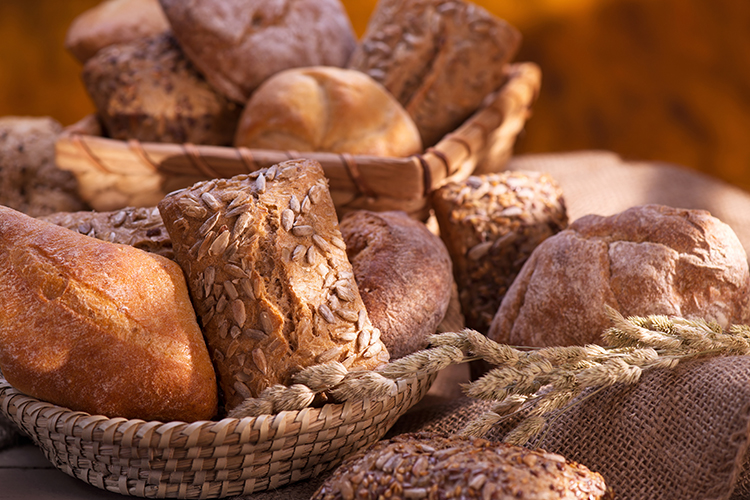
Plant-based is one of the hottest trends in the food industry, and it shows no signs of slowing down anytime soon.
Health, animal welfare and environmental concerns are among the drivers that have compelled leading meat producers, fast-food chains and countless others to retool their product rosters with plant-based options.
But what does plant-based mean for the baked goods industry? After all, breads, rolls, sweet goods and other baked goods are already “plant-based.”
That fact alone gives baked goods a head start in the minds of consumers who are looking to increase their consumption of plant-based products.
And baked goods manufacturers who take the next step — building on that solid platform by adding protein, reducing sugar, marketing their products as ketogenic, or emphasizing a variety of other health-first attributes — will only increase the momentum generated by having a plant-based product to begin with.
“Identifying the importance of plant-based, such as nutritional attributes, is important, and if that’s not an option due to regulation, then identifying where the ingredients come from, their purpose, their origin and/or why in a short statement identifies with consumers as being wholesome, ethical, honest and authentic,” said JoAnn Rupp, Global Insights Manager of Lenexa, Kan.-based Corbion. Lenexa, Kan.-based Corbion.
Top drivers
Benefits consumers desire include an overall healthier balance between macronutrients, like putting emphasis on protein in general, and sticking to diet related menus such as keto products, said Kathy Sargent, Corbion’s Director of Market Strategy.
Eating for immunity and overall vitality are also among the top reasons cited.
“Plant based foods and beverages lend to that balance consumers are seeking,” Rupp said. “The health halo of protein continues to find applications throughout the better-for-you category.”
Use of plant-forward ingredients and heirloom grains such as spelt, einkorn, barley, quinoa, chia and chickpeas, Sargent added, offer ways to formulate with the addition of more protein and fiber while also telling a story of sustainability and transparency.
Characteristics of better-for-you are varied and subject to consumer interpretation, trends and, in 2020 and 2021, a worldwide pandemic.
Popular traits include, but are not limited to, elements of simple, organic, plant-based, sustainable, ethically sourced, familiar ingredients, fortified with fiber and superfoods, lower sugar and no HFCS, low sodium and the inclusion of heart healthy brans and ancient and whole grains.
“It’s the plant-based trend thriving in other foods and beverages that’s driving more interest by consumers and returning to the category of baked goods and better-for-you breads in particular,” Sargent said. “Consumers seek ingredients they recognize and that come from natural sources – plants, vegetables and fruits.”
Hot sellers
According to Label Insights 8% of bread sales contain plant-based flaxseed protein listed on the label, and the category has enjoyed 11% dollar growth in the past year.
About 4.5% of all bread sales contain a plant-based quinoa protein, with13% dollar growth reported over the past year. Sorghum is another trending grain, with 14% dollar growth reported.
Chickpea, coconut, banana, apple and chia flours are among the non-grain-based flours that have enjoyed huge momentum in recent years.
There has also been a 21% growth in bread products that contain kalmut protein, 8% dollar growth in vegan bread claims, 356% dollar growth in ketogenic call outs and ingredients in bread products and 39% dollar growth in baked goods that claim no added sugar according to label insights.
Finding the best solutions
To help its customers create plant-based options, Corbion’s natural mold inhibitors are a perfect fit.
Corbion’s natural mold inhibitors for breads and rolls deliver the shelf life customers are looking for with label-friendly ingredients.
Corbion’s award-winning Verdad MP 100, for instance, is a naturally derived, proprietary combination of vinegar and natural flavor that matches the mold-inhibiting ability of calcium propionate.
Verdad MP 100 stops mold effectively without adversely affecting the flavor of the finished product.
|
Some dos and don’ts of marketing plant-based foods Don’t use “vegan” The word “vegan” tends to conjure a “different from me” reaction in consumers. In 2017, the Better Buying Lab commissioned social media analytics company Brandwatch to scan 15.4 million posts across Twitter, Instagram, blogs and forums from the U.S. and Britain that included references to plant-based, vegan and vegetarian foods. The term “vegan” was more than twice as likely to be used in negative contexts as “plant-based,” Brandwatch found. Do highlight origin In a time when more and more consumers want to know where their food comes from, labels that call out ingredients’ origin may be evocative. For example, a Panera Bread in Los Angeles decided to change the name of one of its soups to call out its provenance, resulting in a bump in orders. The restaurant switched the name of its “low-fat vegetarian black bean soup” to “Cuban black bean soup” in a month-long naming test in January 2018. The swap led to a 13% uplift in sales. Do focus on flavor Spotlighting how a dish will taste automatically increases its appeal and “gets mouths watering. Plant-based meal delivery service Allplants used this naming method to drive growth. “When we started out, we were using more ingredient-specific names like ‘Black bean chili’ and ‘Beets bourguignon,’” said Alex Petrides, co-founder of Allplants. “But we’ve learned that names highlighting the delicious, distinctive flavors we use, such as ‘Smoky soul chili’ and ‘Fiery jerk jackfruit,’ are much more successful.” Do emphasize look and feel Look and feel drives appeal, and descriptors referencing appearance and mouthfeel may make all the difference. “A compelling dish name should emphasize culinary qualities that make that dish delicious and distinctive,” said Scott Giambastiani, chef and food service manager at Google. Color is the single biggest cue consumers use to set their expectations of what a food will taste like, and emphasizing the color variety in a food may result in sales increases. For example, “Rainbow salad” creates an expectation of a fresh, flavor-packed and visually vibrant dish. Source: Food Business News |

